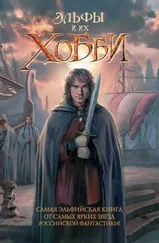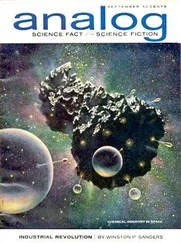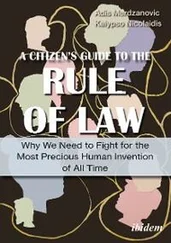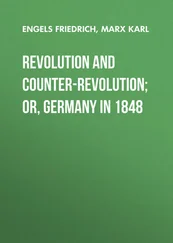Feeling inspired for the first time since the end of the war, Hitler honed his raw haranguing power; through hard work and dedication he grew the party with his message that Germany’s woes were due to the Jews and the Communists. Hitler’s rhetorical pictures of a racial fantasyland, where honor and order would be restored to the proud Germans, proved much more popular than the bad watercolors he had sold on the streets before the war. The growing masses who attended his beer-hall speeches soon made him a local celebrity.
By 1922 Hitler had attracted two of his main cohorts who were to prove instrumental in bringing him to power and then crashing the world into World War II. Hermann Goering, after a war in which he had taken over the famed Richthofen squadron from the Red Baron in 1918, had moved back into his mom’s apartment in Munich. A bigger humiliation, however, was the open contempt he received from the left-wing revolutionaries who often stripped the medals off the chests of soldiers in public.
Goering often vented his anger at beer-hall rallies. He was soon window-shopping for a radical party to join that was as bitter and determined to avenge the defeat as he was. He quickly found Hitler in the fall of 1922. When Goering heard Hitler’s harangue about the injustices of the Versailles Treaty, it was love at first rant.
Hitler instinctively knew the dashing, decorated former war ace was a great addition to the still-small party. Goering possessed the rare combination of a common touch covering a ruthless cunning. Shortly after their first meeting, Hitler handed him command of the SA ( Sturmabteilung ), Hitler’s street brawlers.
Meanwhile, Heinrich Himmler, the son of a middle-class devoutly Roman Catholic Munich family, joined the team as an anonymous peon. While not the usual background for a grand terrorist-in-the-making, Himmler was overly influenced by his history-obsessed father. He nurtured dreams of the good old days when racially pure Teutonic knights ruled the forests of Prussia with nary a Jew or Communist to mar the vision.
Little Heinrich always strived to be the best in whatever he did, and as a German youth he craved to serve his country by joining the futile slaughter of World War I. But the German army was very strict in denying non-nobles the opportunity to become officers and direct the carnage. The rules changed only when the ranks of young noblemen started to grow thin at the end of the war.
Heinrich finally landed his officer post, but to the dismay of millions of his future victims he missed all the action and failed to achieve the ultimate sacrifice for his country. Back home in one piece he set his hopes on tilling the soil of a far-flung Prussian outpost like a knight from his juvenile Teutonic fantasies. He joined a Freikorps but narrowly missed out on the bloodletting as his unit failed to join the thrashing of the Reds in 1919. After a year of chicken farming in 1921 in preparation for tilling his Prussian fantasyland, he met Ernst Röhm at a weekend Teutonic fantasy camp. Röhm, another embittered veteran, was an active army officer whose main job was to hide weapons from the Allied soldiers who were haplessly trying to control the growing chaos in Germany. Röhm was in a position to help any political group he favored by giving them access to the stashed weapons. He soon took a shining to Hitler’s promising little group of Nazis. As the Nazis grew in popularity, they needed brawlers to control their raucous beer-hall meetings, and Röhm nurtured the fledgling SA by providing it with men and weapons. Himmler, part of one of Röhm’s groups, tagged along and was soon sucked into the growing vortex of the Nazi party.
After Munich had been brutally cleansed of its Bolshevik-styled government a few years earlier, it became the focal point of a right-wing revolution, its streets and beer halls bubbling with fascistic energy. In the evenings the Freikorps leagues kept themselves in trouble and prepared for the next day of unemployment by battling each other for control of the streets. In their quieter moments, they crowded into the beer halls to discuss the various violent methods of overthrowing the elected government. Like blood and beer mixing in the gutters, the right wingers, Communists, and socialists could agree on only one thing: anything had to be better than the democracy they were suffering under.
The Prussian generals were determined to keep the rowdy Freikorps under their control, and they kept a wary eye on Munich. Gustav von Kahr had installed himself as Bavaria’s right-wing dictator in Munich. Kahr was amenable to any right-wing government, but particularly enamored of monarchy, and still pined for the recently scuttled Wittelsbachs, one of the minor royal families who had been tossed back on the monarchical scrap heap after their seven-hundred-year interlude of ruling Bavaria.
By 1923, Hitler was in full control of the Nazi party. He gave his buddy Röhm the task of staffing up the violence bureau, and he brought in the angriest of the Freikorps rowdies. Hitler’s first big speech as a politician had been in February 24, 1920, in the Hofbräuhaus before 2,000 people. Now his little party had almost 100,000 members, including 15,000 SA brawlers, and was recognized as a real threat by the government and the Prussian officers who really controlled the country. Determined not to invite retaliation by the French before the German army was slowly rebuilt into its former Europe-stomping glory, the government, still struggling with the obscure limits of democracy, outlawed fringe parties and clamped down. Hitler retreated from the scene that summer and considered his options.
The time for someone to strike was ripe. In January 1923 the French had occupied the industrial Ruhr valley, combining further Gallic humiliation with a crushing economic blow. The German government, backed in a secret and cynical effort by the industrialists, was busy printing marks like so many strudels in order to pay off the reparation debt owed to the Allies. The resulting massive hyperinflation had the unfortunate side effect of wiping out the bank accounts of most ordinary Germans. The despised democratic government took the blame, of course.
In Munich, the protoführer von Kahr and the other right-wing-leaders-to-be had been meeting with Hitler about extending von Kahr’s Munich dictatorship over all of Germany. But to Hitler’s exasperation, everyone kept dickering over the details, including, most importantly, who would become the Big Leader. Kahr wanted to reinstall the monarchy; Röhm wanted to turn his Freikorps into a real military threat and pined for a replacement dictatorship; von Seisser, the Bavarian police chief, liked Hitler but not as much as the Freikorps and could not decide whom to support; von Lossow, the Bavarian army chief, who supported the dictatorship model of governing, also liked Hitler but knew that supporting the pushy young wannabe dictator would displease his superiors in Berlin. So he also sat on the fence.
Hitler, impatient to start dictating, met with all of them throughout the fall. He had given von Kahr, von Lossow, and von Seisser his word that he would not start the counterrevolution without them. But time, it seemed, was quickly running out for the impatient future führer. When von Kahr announced a big speech in Munich’s Bürgerbräukeller, slated for November 8, Hitler panicked and, not wanting to get left behind in the führer race, quickly cooked up a plan and made his move. He met with his minions the night before, and they plotted well past midnight. Their jury-rigged plan depended on the unproven organizational genius of Goering leading the Nazi’s SA fighters and the participation of the unassailable General Ludendorff.
WHAT HAPPENED: OPERATION “CAN’T ANYONE HERE THROW A REVOLUTION?”
Читать дальше












